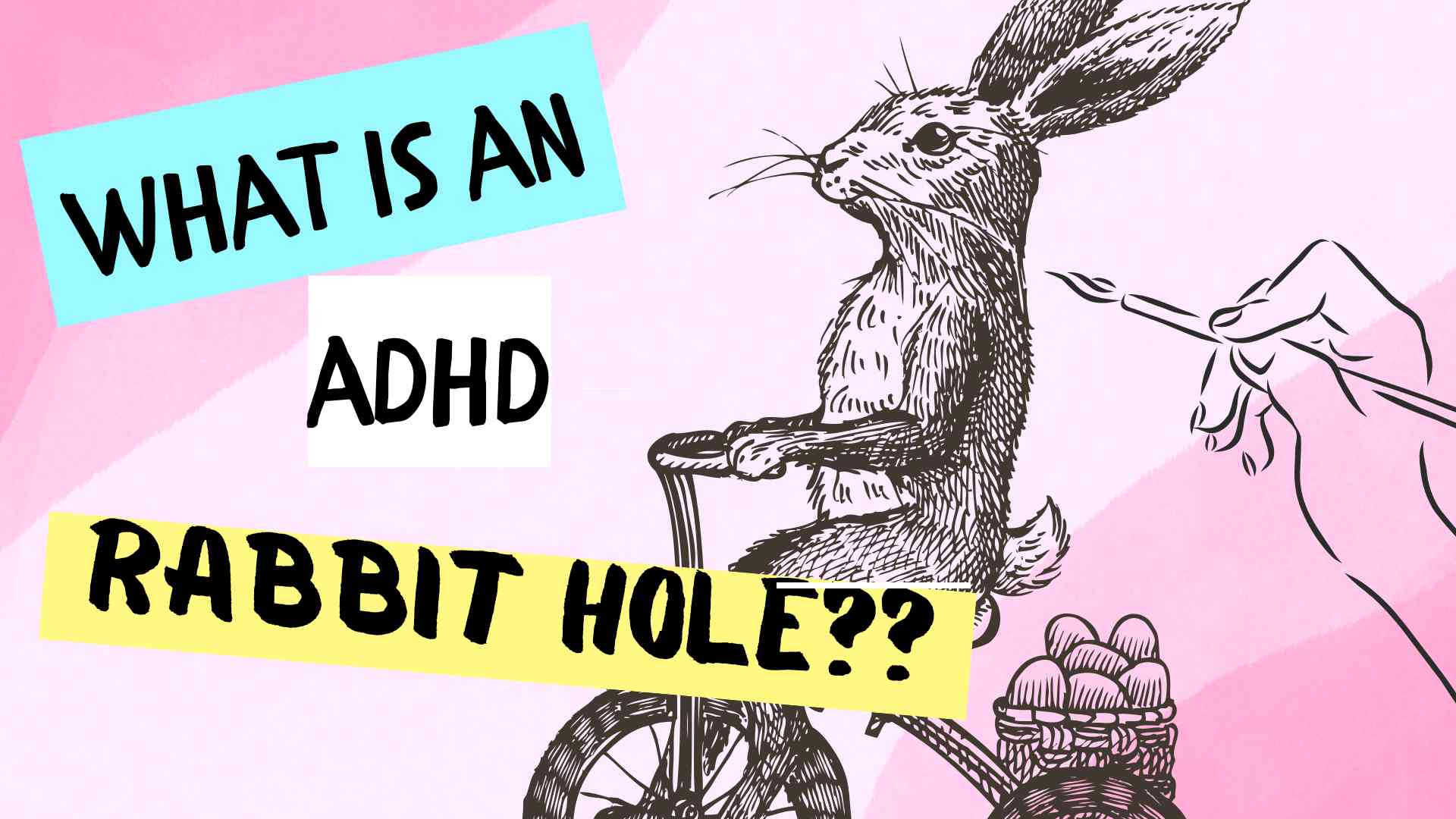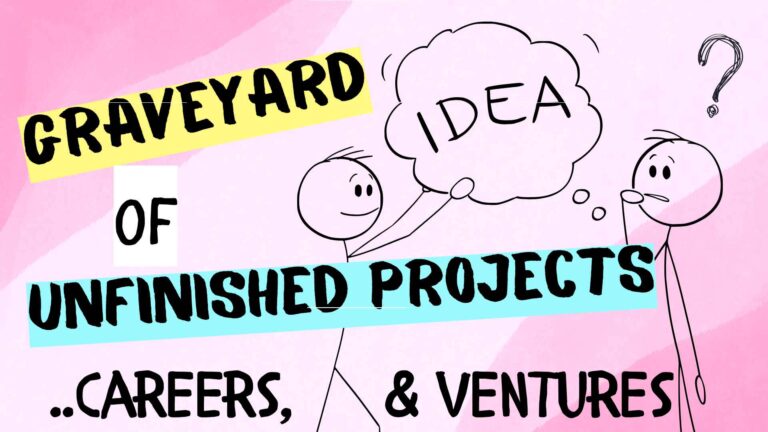Ever find yourself planning to do just one quick thing, and next thing you know, you’re knee-deep in YouTube videos, reorganizing your files alphabetically, and wondering how three hours just… vanished.
Welcome to the world of the ADHD rabbit hole—a mental detour that starts innocently and spirals into a deep dive of intense (and often unintended) focus. It’s not procrastination in the usual sense—it’s curiosity on overdrive, powered by a brain that thrives on novelty, stimulation, and the thrill of unexpected discovery.
Meanwhile, you’re on your glorious adventures while your to-do list sobs quietly in the background.
Table of Contents
- So, What is an ADHD Rabbit Hole?
- What’s the Difference Between a Rabbit Hole and a Shiny Object?
- Why Does it Happen?
- What Does it Look Like?
- Is it all bad?
- Tips for Outsmarting the Bunny Trap
So, What is an ADHD Rabbit Hole?
At its core, an ADHD rabbit hole is an intense, often accidental deep dive into a task, topic, or interest that absorbs so much of your attention that everything else fades away. It usually starts with something simple: replying to an email, searching for a recipe, tidying one corner of a room. But then—bam! You’re color-coding your spice rack or suddenly watching documentaries on spice trade routes at 2 a.m.
I’m going with a real-life example here. I was just in the middle of checking email, when I discovered someone asked on my website, “What is an ADHD rabbit hole?” Did I abandon the email? Yes! Did I stop everything and write a blog post about rabbit holes? Yes again. *Sigh*
Unlike the intentional, focused concentration sometimes called hyperfocus, an ADHD rabbit hole feels more like being swept away by a current of curiosity and distraction. You’re not just interested—you’re fully immersed, sometimes losing track of time, priorities, or even hunger.
What’s the Difference Between a Rabbit Hole and a Shiny Object?
Great question—they’re definitely related, but they’re not quite the same thing.
A “shiny object” is usually a distraction—something new, exciting, or novel that grabs your attention and pulls you away from what you were originally doing. Think of it like a mental squirrel moment: “Ooh! What’s that?” It’s often fleeting and impulsive, and for people with ADHD, it can happen a lot because the brain craves stimulation and novelty.
A “rabbit hole,” on the other hand, is what happens after you chase that shiny object. It’s the deep dive—the hours-long detour where you go from one thing to another, completely immersed and often unaware of how much time has passed. It’s less about the initial distraction and more about the journey that follows.
So in a way:
- Shiny object = the spark
- Rabbit hole = the wildfire
They’re part of the same ADHD ecosystem, but one is the trigger and the other is the adventure (or derailment, depending on your perspective).
ADHD Coach Dana Rayburn says, “The trick is not getting pulled into the magnetic force of the distraction to the point where you get stuck and can’t get back to what you’re supposed to be doing.” That goes for both shiny objects and rabbit holes!
Why Does it Happen?
ADHD impacts the brain’s executive functions—things like task-switching, attention regulation, and impulse control. Combine that with a natural flair for curiosity and a tendency to follow novel stimuli, and you’ve got the perfect storm for a rabbit hole. They’re not always unproductive, either—many people with ADHD have learned incredible skills or discovered deep passions thanks to a hyperfixated detour.
I can attest to this. As an IT person, there has been some pretty tangled up problems I’ve solved. Although my coworkers are amazed with my patience, I know better – it’s my hyperfocus superpower.
What Does it Look Like?
- Starting to vacuum… and ending up reorganizing the bookshelf by genre and author.
- Reaching into a junk drawer for something, and then suddenly dumping it out claiming “Today’s the day this gets cleaned!”
- Writing a paper, clicking on one source… then four hours later, you’re reading about the migration patterns of penguins (and the paper remains unwritten).
Is it all bad?
Not necessarily. ADHD rabbit holes can be frustrating when they disrupt daily life or derail time-sensitive tasks. But they can also lead to creativity, spontaneous learning, and uncovering hidden passions. The key is learning to spot when you’re in one—and choosing if you want to ride it out or gently climb back to the surface.
Tips for Outsmarting the Bunny Trap
- Set timers to check in with yourself.
- Write down the original task before you begin—it acts like a breadcrumb trail.
- Use visual or audio cues like alarms, reminders, or sticky notes to anchor your attention.
- Practice self-compassion—these tangents are part of how your brain explores the world.
Falling down a rabbit hole doesn’t make you lazy or undisciplined—it means your brain works in fascinating, nonlinear ways. The trick is figuring out when it’s okay to explore… and when it’s time to surface for air.




